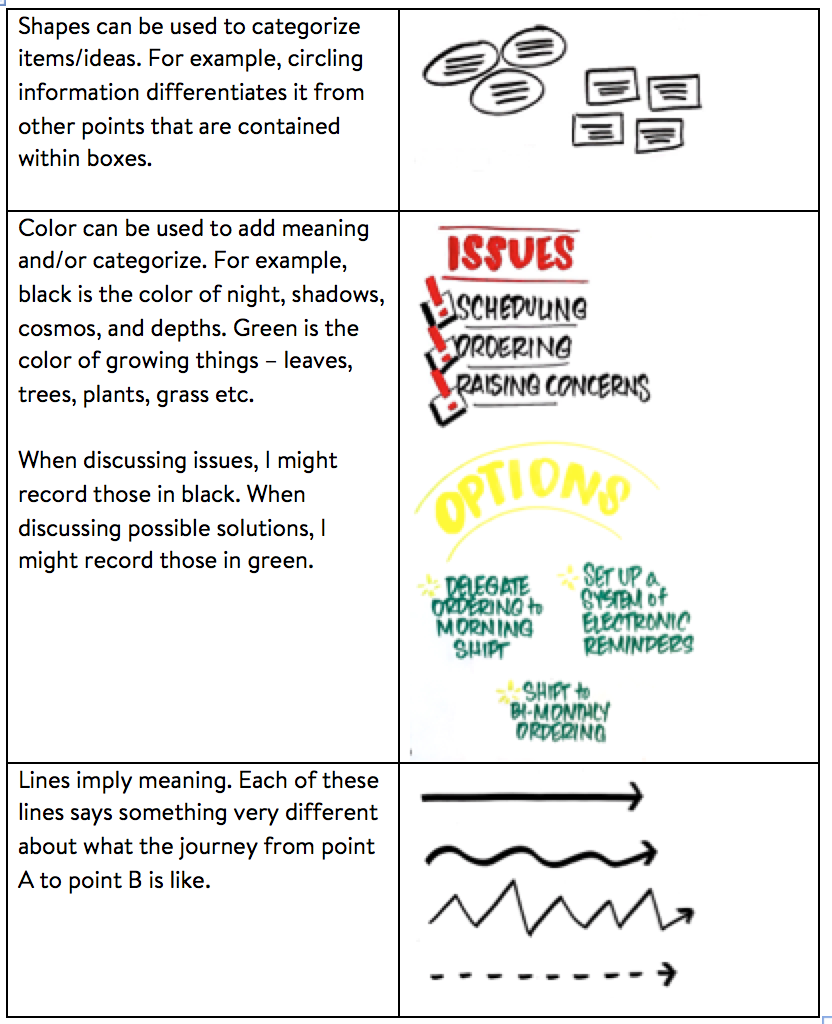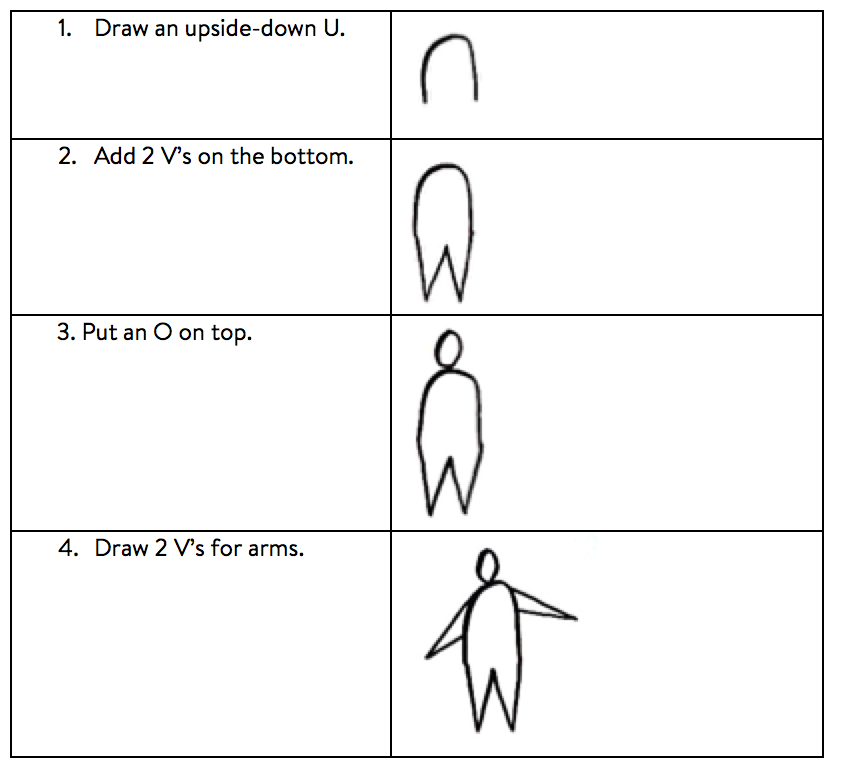
“Visual communication is a cultural technique that can revolutionize the way people think, learn and work in collaborative processes” as Martin Haussman explains in his book UZMO, Thinking With Your Pen. Think about that.
Just by making the words spoken in a meeting tangible by writing them on the wall/whiteboard, you create a new culture of participation and in mediation, this assists how parties solve their issues together.
But here’s the kicker. It only works if you pick up your markers.
If you’re like most dispute resolution practitioners, you’re thinking, “Well that’s very nice, but I’m not an artist. I can’t draw!” Don’t worry. I can help you break through that all too common barrier, so you can get on with bringing the benefits of working visually to your clients. It may sound counterintuitive, but the great news is that you do not need to DRAW to work visually in your process/practice.
Here are three reasons you don’t need to be an artist to use visuals in your mediation.
1) Images are only ONE small part of visual language. Priority #1 is getting the important thing that’s been said on the map.
Drawings and icons have meaning, but nothing beats text. Text is the primary information carrier, so if you can print, you’re off to a strong start.
In my visual mediations, I find most of what I record live on the wall for the parties to see is text-based. With any time that’s left after that, I usually choose returning to my seat to reengage intimately in the conversation over staying at the wall to add an image that would add less value than my presence at the table. Words on the page are most often enough.
When mapping a meeting when there is NOT conflict in the room, I use loads of imagery in my visual recording of a discussion, but in a mediation, I don’t. Instead, what I capture are far less pretty notes. They’re rough, raw, working information that helps clarify the discussion and allows the parties to see what’s been brought to the table, and shows them that their thoughts are being heard and processed. Regardless of the aesthetic, parties benefit from being able to see their words and ideas on the wall where they can reflect on and work with them in a different way.
2) Aside from images, there are other components or “vocabulary” that make up visual language such as shape, color and line. When you learn to use the OTHER PARTS of your visual vocabulary to structure words on a page, you can communicate a ton of meaning.

3) You can learn visual vocabulary, just the same as you can learn to speak any other foreign language. That means, that if you actually want to, you can learn to draw. Much the way you learn language one word at a time, you can build a vocabulary of images one at a time. It’s simply a case of learning how “seed shapes” (circles, ovals, squares, rectangles, triangles and lines) combine in various ways to make images. Then it’s simply a matter of practicing each image a few times until it enters your muscle memory.
Here’s an example Haussmann teaches. It’s a simple yet effective drawing that uses three letters (U, V, and O) to create a figure. So, if you can print the letters U, V, and O, you can draw a “UVO” person.

The biggest mindset shift you can make is to think of working visually in mediation not as art, but as COMMUNICATION. It’s about adding a second channel of communication that helps people who are in conflict and under stress hear, think and process information better.
Here’s what I really want you to take away. You CAN learn to draw, but if you choose not to, know you can still make a discussion visual without using a single image. Don’t let your fear of not being a proper artist keep you from harnessing the power of visual mediation for yourself and your clients. Creating the map of what’s being said is far more about the process of collaborating and co-creating a solution than it is about the aesthetic quality of the end product.
Think you’re ready to start adding visuals to your mediation sessions? Check out my FREE 3-part training series to learn more about the benefits of working visually and how you can begin using visual communication to help your parties resolve disputes.
Comments